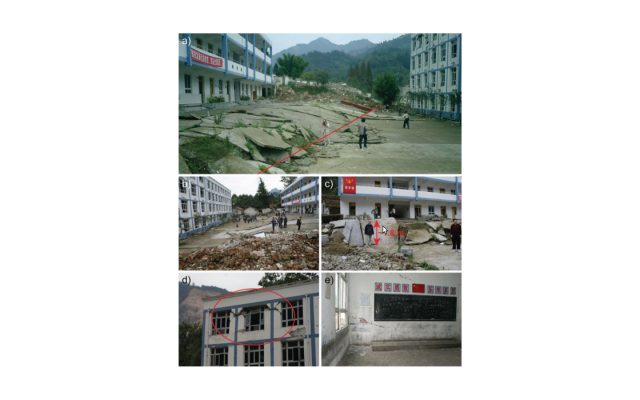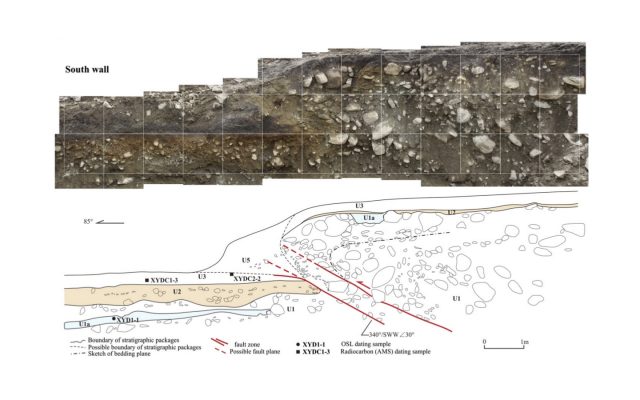Admitting our ignorance: unexpected earthquakes under the magnifying glass
In addictions the first and toughest step is admitting our fault. The same applies in science: assuming our ignorance pushes us beyond the starting line, ready to delve into the unknown. So when in May 12th, 2008 a devastating earthquake struck the Sichuan province in Southwest China -labeled as ‘moderately quiet’ in terms of seismicity-, it caught scientists by surprise and they had to admit their lack of understanding of seismic hazard in continental interiors.
But when an earthquake kills more than 80 000 people and inflicts economic loss exceeding 100 billion dollars (an amount larger than the GDP of two out of three countries in the world), assuming responsibility does not suffice. So Chinese and US seismologists faced the challenge and joined forces to shed light on the underground through an ambitious research plan. The program encompassed a variety of studies, including drilling down to 1200 meters to find the causative fault of the earthquake 1 and a binational meeting on great earthquakes in the area where sharing their findings.

It all takes time in science though, so the meeting took place in Chengdu, capital city of Sichuan, three years after the earthquake, and the resulting studies have been published in a special issue of the journal Tectonophysics this last January. Despite the four and a half years wait, the results are substantial 2.
Sichuan exemplifies a continental area deforming at a slow pace. These relatively quiet seismic areas suffer from seldom large earthquakes that may hit once every 500 or 1000 years, or even more infrequently. By contrast, in seismically active areas at plate boundaries (such as California or Turkey) large earthquakes roar once or twice each generation. This short-term, cyclic character allows accurate estimations of the recurrence time, which represents the average span between two large earthquakes.
Then the issue for quiet areas is that devastating earthquakes still happen, but with such long recurrence times that nailing down the next one becomes daunting. To make their best bet seismologists need to extend their record back in history as far as possible. Instrumental seismicity was born in the 1900s, thus only earthquakes after that date show accurate locations and magnitudes -the size of the event- in seismic catalogs. Before the 20th century history comes on the scene: royal chronicles, official letters, damage reports, or even casual descriptions by travelers or writers… everything matters to find, size, and put approximately on the map the elusive historical earthquakes -those occurred before the advent of instrumentation.
This may mean discovering nothing in regions where written records lack till recent dates, such as remote mountainous areas or the last colonized territories. Or it may require countless hours scrutinizing the profuse written documentation of other areas, such as China. Diving into the Sichuan historical records is precisely how seismologists dust off 14 historical earthquakes in the region during the last 500 years 3. These events, however, were minute when compared with the 2008 killer, nearly 600 times more powerful, so the quest had to continue.
But estimating long recurrence times with short historical records mimics illuminating a cathedral with a match. Therefore when history comes to an end, it is time to get dirty. Whenever seismologists cannot read letters, they can read mud, because geology sculpts its own stories in the sediments, though only a few can decipher them.
When paleoearthquakes occurred (before the existence of historical records) they disrupted the existent sediments on the surface, altering their layer geometry, color, size, roundness, or organic matter content. Later sedimentation fossilized these changes, burying them in the most silent library. Paleoseismologists choose spots near the suspect faults with a good sedimentary record -a long enough archive-, such as terraces along rivers, and dig trenches as deep -old- as they can. Inspecting the walls of the trench till the tiniest sand grain they reconstruct the sediments history and uncover remote earthquakes, dating them through radiocarbon analysis as archaeologists do.

Credit: Chen et al. (2013)
Such a detective’s job pays back: trenching around the 2008 epicenter unearthed two more large earthquakes occurred in the last 5700 years, which yields a recurrence time around 2850 years 45. Given that the last earthquake took place five years ago, this result seems calming. However, more worrisome findings emerged from the sediments beyond the southern edge of the 2008 rupture. There seismologists found another fault -previously thought inactive- whose last big earthquake dates back to 1661, as revealed by porcelain fragments of the late Ming dynasty at the trench. To make things worse, the 2008 rupture increased the forces acting on this fault, bringing it closer to failure 6. This means the next damaging event could break this mature fault, affecting a population even larger than that of 2008.
All in all the studies confirm that the Sichuan region has been deforming quietly but steadily at least for the last 6000 years and that the next damaging earthquake is just a matter of time. These conclusions may also hold for other relatively quiet continental interiors, such as the Central and Eastern US. Where will the next unexpected great earthquake hit? Seismologists have not reduced their ignorance enough yet to answer this question. They have, however, taken the first steps that hopefully will lead to mitigate earthquake risk in the long term.
References
- Li, H. H. Wang, Z. Xu, J. Si, J. Pei, T. Li, Y. Huang, S.-R. Song, L.-W. Kuo, Z. Sun, M.-L. Chevalier, and D. Liu (2013). Characteristics of the fault-related rocks, fault zones and the principal slip zone in the Wenchuan Earthquake Fault Scientific Drilling Project Hole-1 (WFSD-1). Tectonophysics 584, 23–42. doi:10.1016/j.tecto.2012.08.021 ↩
- Zhang, P.-Z., and E.R. Engdahl (2013). Great earthquakes in the 21st century and geodynamics of the Tibetan Plateau. Tectonophysics 584, 1–6. doi:10.1016/j.tecto.2012.11.001 ↩
- Chen, W.-P., and L. Hsu (2013). Historic seismicity near the source zone of the great 2008 Wenchuan earthquake: Implications for seismic hazards . Tectonophysics 584, 114–118 . doi: 10.1016/j.tecto.2012.08.035 ↩
- Ran, Y.-K., W.-S. Chen, X.-W. Xu, L.-C. Chen, H. Wang, C.-C. Yang, and S.-P. Dong (2013). Paleoseismic events and recurrence interval along the Beichuan–Yingxiu fault of Longmenshan fault zone, Yingxiu, Sichuan, China. Tectonophysics 584, 81–90 . doi:10.1016/j.tecto.2012.07.013 ↩
- Chen, L., Y. Ran, H. Wang, X. Shi, R. Liu, and S. Dong (2013). Paleoseismology and kinematic characteristics of the Xiaoyudong rupture, a short but significant strange segment characterized by the May 12, 2008, Mw 7.9 earthquake in Sichuan, China. Tectonophysics 584, 91–101 . doi:10.1016/j.tecto.2012.08.030 ↩
- Wang, M., D. Jia, A. Lin, L. Shen, G. Rao, and Y. Li (2013). Late Holocene activity and historical earthquakes of the Qiongxi thrust fault system in the southern Longmen Shan fold-and-thrust belt, eastern Tibetan Plateau. Tectonophysics 584, 102–113 . doi:10.1016/j.tecto.2012.08.019 ↩
2 comments
[…] (Original text published in Mapping Ignorance) […]
You need to be a part of a contest for one of the greatest websites online.
I am going to recommend this blog!